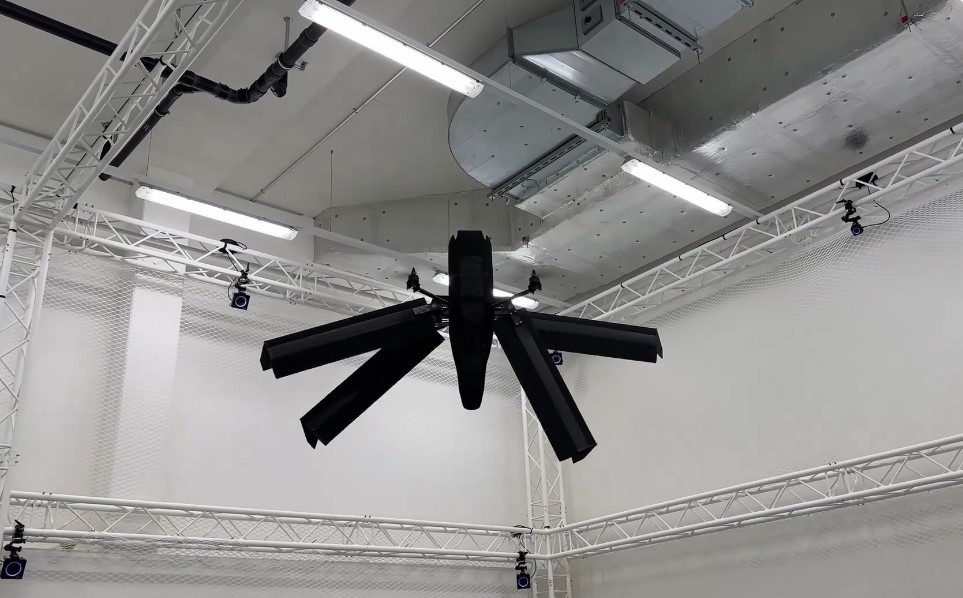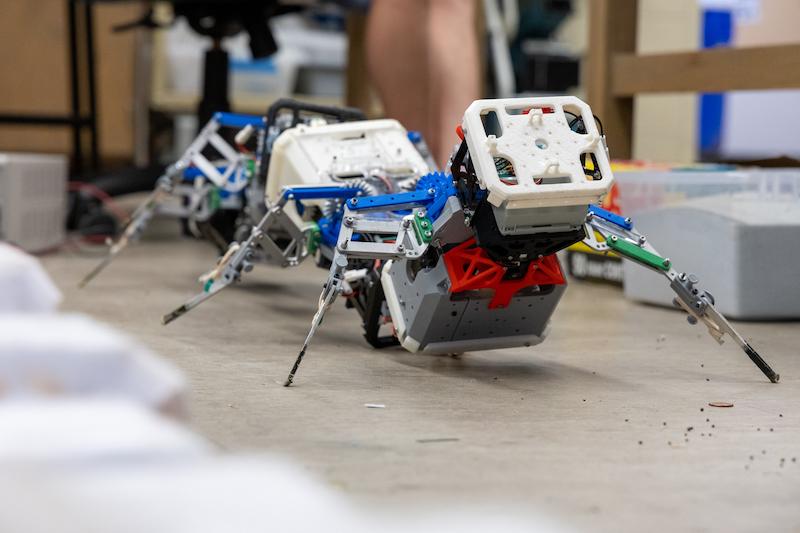2023-05-05 スイス連邦工科大学ローザンヌ校(EPFL)

◆Morphoと呼ばれるこのハイブリッド無人航空機は、内蔵センサーとカメラと組み合わせられ、高電圧送電線、風力タービン、ガスパイプライン、海洋油田などのインフラ点検に適している。
◆Elythorの共同創設者であるHarry Vourtsis氏は、「Morphoを使用することで、ドローンの点検にかかる時間と費用を平均35%削減できると計算している」と語っている。Elythorは、数か月以内に市場投入する予定であり、データの収集と分析のためのソフトウェアも開発している。
<関連情報>
- https://actu.epfl.ch/news/new-inspection-drone-uses-wind-to-lengthen-flight-/
- https://onlinelibrary.wiley.com/doi/full/10.1002/aisy.202200297
- https://infoscience.epfl.ch/record/301328
風に逆らうモーフィング ドローン Wind Defiant Morphing Drones
Charalampos Vourtsis, Victor Casas Rochel, Nathan Samuel Müller, William Stewart, Dario Floreano
Advanced Intelligent Systems Published: 19 January 2023
DOI:https://doi.org/10.1002/aisy.202200297

Abstract
Intense winds are a challenge for vertical take-off and landing drones with wings. In particular, in the hovering regime, wings are sensitive to wind currents that can be detrimental to their operational and energetic performances. Tail-sitters are particularly prone to those wind currents because their wings are perpendicular to the incoming wind during hovering. This wind generates a large amount of drag and can displace and destabilize the vehicle, possibly leading to catastrophic failures. Herein, our morphing strategy demonstrates in a custom-built 1.8 kg tail-sitter with morphing wings that can actively resist winds and leverage them to increase its aerodynamic efficiency. It is shown that adaptive wing morphing during hovering in adverse wind conditions can reduce normalized energy consumption up to 85%, increase attitude and positional stability, and leverage wind energy to increase its yaw angular rate up to 200% while decreasing motor saturation levels.
モーフィングウィングを持つレジリエントドローン Resilient drones with morphing wings
Vourtsis, Charalampos
Lausanne, EPFL Record creation date:2023-03-20
DOI:https://doi.org/10.5075/epfl-thesis-9682
Abstract
Winged aerial robots and Unmanned Aerial Vehicles (UAVs) commonly referred to as winged drones and drones, are increasingly used in a wide range of professional and non-professional applications today, spanning from civilian to military. As a result, they have to operate in diverse and challenging environments throughout their mission. However, these flying robots suffer from design limitations that reduce their operational envelope in such environments, increasing cost and restricting their mission advantage over other vehicles. Moreover, current winged drones’ fixed geometry limits their operational versatility due to their inability to adjust to the requirements dictated by their diverse, complex, and often changing environments. For example, strong and sustained wind currents can tip over or push off-course small-sized drones with exposed wings. Once tipped over, fixed-wing drones will be unable to continue their mission. In addition, when a mission might require ground operations, these winged drones may be prone to damage caused by contact between their exposed wings and electronics with ground objects. Drones that are resilient to challenging conditions exist in the literature and on the market, although they are restricted to rotorcrafts with limited range and operational endurance. The purpose of this thesis is to develop the next generation of resilient, autonomous, winged aerial robots. The focus will be on addressing operational requirements that a wing drone might face during routine industrial missions, for example, inspection, monitoring, reconnaissance and search and rescue. Different methodologies and design strategies will be presented to allow next-generation winged drones to operate in these challenging conditions, including adverse wind currents and changes from open, wide to cluttered, confined, and unstructured environments.



